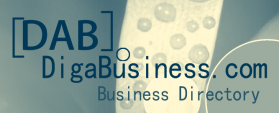Bond Investment Basics |
| Date Added: March 13, 2007 06:22:08 AM |
| Author: |
| Category: Money & Finance: Bonds |
| Unlike the stock market, there's no central exchange for trading bonds. Nevertheless, the process is almost as easy as trading equities (stocks). Acquire, if you haven't already, a brokerage account - such as the ones from a full-service broker or one of the many on-line only trading accounts. In some cases, it'll be necessary to phone rather than place an order over the Internet. Ok, that's the easy part. Now, for the slightly more difficult aspects. Bonds have a purchase and sale price, but also an interest rate. Purchasing one entitles the bearer (bondholder) to payment of the principal at maturity (when the principal must be repaid in full), and twice-annual interest payments. Price Movements and Interest Rates Just as with stocks, bond prices vary. The initial price (and the interest rate they pay) is set at the time they're issued. As soon as seconds later they may be worth more or less than that. One of the major factors influencing bond price movements is general market interest rates. If interest rates on real estate loans, large corporate bank loans, savings instruments such as certificates of deposit (CD) fall after the bond is issued, the price of that bond will tend to rise. Common sense reveals the reason. Purchase a 5 year bond at $1,000 that pays 7%, comparable (let's suppose) to that offered by a similar-risk 5-year CD. Six months later, interest rates fall to 6%. (A larger than normal drop for that period, but not unknown.) You now hold an instrument that pays more in interest than a competing investment. Yours will command a higher price, if you choose to sell. (Specifically how much they tend to rise or fall, based on the amount of rate change, over what expected period and other factors, is a complex topic we leave for elsewhere.) Bonds trading 'over 100' are said to be trading at a premium and bonds 'under 100' at a discount. The terminology refers to: 100% over or under the initial price. For example, a $1,000 bond (face value, i.e. initial issue price) currently selling for $1,100 is trading at a premium. (By, 10% in this case, since $1,100-$1,000 = $100 and $100 is 10% of $1,000.) Risk Bonds, like any other investment, entail risk. Though bondholders have priority over shareholders (owners of company stock) in case of bankruptcy, if there's no money to pay position in line is unimportant. Most bonds are relatively low risk, at least in that they do repay bondholders the principal. Low risk tends to correlate with low return, however. Fortunately for the average investor several long-standing, well-respected bond rating agencies exist. The most well-known are Standard and Poor (S&P) and Moody. These two companies rate bonds according to highly technical analyst-calculated formulas, but the result is relatively simple: a sliding scale of 'very low risk' AAA (or Aaa – Moody), to 'very high risk' CCC or lower (so-called junk bonds). As with any investment, the investor should do considerable homework - investigating earnings projections, likely legal entanglements, outstanding amount of debt and other factors - before buying bonds. Remember, you're granting a loan. You'd like to earn interest on the loan and you want the principal to be repaid on time. |
|
|




